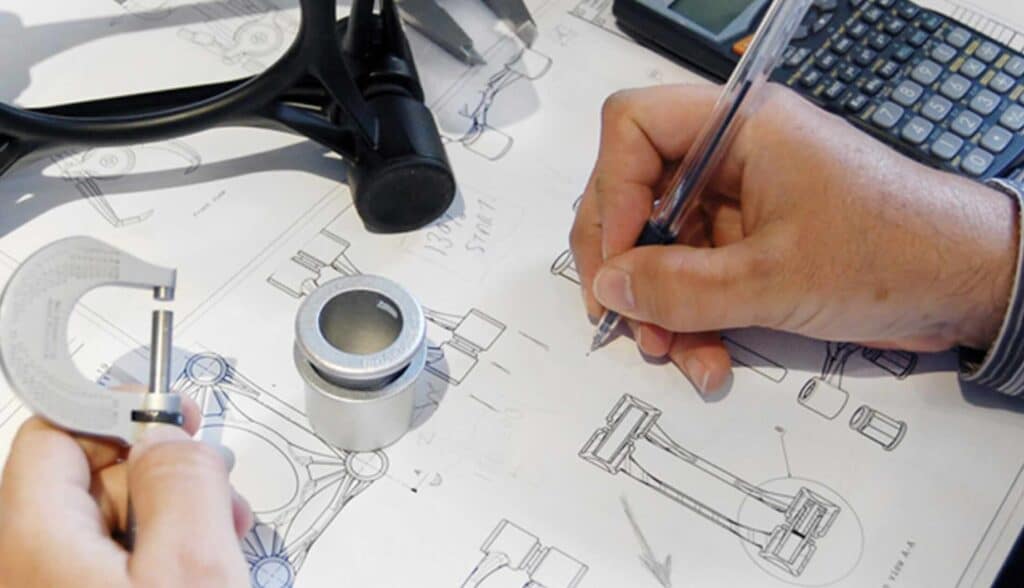
Mechanical engineering is one of the oldest branches of engineering that has seen a lot of technological advancements in recent years. With the advent of artificial intelligence (AI), many industries, including mechanical engineering, have started to leverage the power of AI to improve their processes and products. In this article, we will discuss how mechanical engineers can benefit from artificial intelligence and how companies like Convergence Consulting use AI to improve their operations.
Artificial intelligence is the ability of machines to simulate human intelligence and perform tasks that typically require human intelligence, such as visual perception, speech recognition, decision-making, and language translation. The use of AI in mechanical engineering can bring many benefits, such as improved product design, increased productivity, and better quality control.
Benefits of Artificial Intelligence in Mechanical Engineering
Improved Product Design
One of the major benefits of AI in mechanical engineering is improved product design. With the help of AI, engineers can optimize product design by using simulation models that consider various design parameters such as material properties, manufacturing constraints, and performance requirements. AI can also generate design ideas by analyzing past designs and market trends.
AI can also assist in reducing the time and effort required for design iterations. Engineers can use AI-powered tools to create a virtual prototype of the product and test its performance in various operating conditions. This can help in identifying design flaws early in the development process, leading to reduced development time and cost.
Increased Productivity
Another major benefit of AI in mechanical engineering is increased productivity. AI can automate routine and time-consuming tasks such as data analysis, quality control, and predictive maintenance. This can free engineers to focus on more complex and creative tasks like product design and innovation.
AI can also assist in optimizing manufacturing processes by analyzing data from sensors and other sources to identify areas of improvement. For example, AI can analyze data from sensors on manufacturing equipment to identify patterns that indicate when the equipment is likely to fail. This can help schedule maintenance before the equipment breaks down, leading to reduced downtime and increased productivity.
Better Quality Control
Quality control is another area where AI can benefit mechanical engineering. AI can be used to monitor production processes in real time and detect defects as they occur. This can help identify and correct problems before they lead to product recalls or customer complaints.
AI can also assist in improving the accuracy of quality control by using machine learning algorithms to analyze data from sensors and other sources. This can help in identifying patterns and anomalies that indicate quality issues. For example, AI can analyze data from sensors on a machine that produces parts to identify when the machine is not operating within its normal parameters. This can help identify and correct quality issues before they impact product quality.
Convergence Consulting: A Case Study
Convergence Consulting is a firm that specializes in providing engineering consulting services to a wide range of clients, mainly in the manufacturing field, packaging automation, medical equipment, wrapping machinery, and precision components. The company has been using AI to improve its operations and provide better services to its clients.
One of the areas where Convergence Consulting has been using AI is in many fields of design automation, in particular in systems such as packaging automation, medical equipment, wrapping machinery, and precision components. The company has developed an AI-powered tool that can optimize the design of these systems based on various parameters.
There are several artificial intelligence (AI) power tools that can help optimize the design of systems, such as packaging automation, medical equipment, wrapping machinery, and precision components. Here are a few examples:
Generative design software: This AI-powered tool uses algorithms to generate multiple design options based on user-specified criteria. It can help optimize designs for weight, strength, and other factors, which can be especially useful for designing components or machinery.
Finite element analysis (FEA) software: FEA software uses AI algorithms to simulate how a design will behave under different conditions, such as stress, heat, or vibration. This can help identify potential problems and optimize the design to improve performance and durability.
Neural networks: Neural networks can be used for tasks such as image recognition, which can be useful in designing machinery or components that rely on sensors or cameras for feedback. They can also be used for predictive maintenance, helping to identify potential issues before they become major problems.
Natural language processing (NLP): NLP can be used to analyze customer feedback, user manuals, or other sources of information to identify common problems or areas for improvement. This can help inform design decisions and prioritize areas for optimization.
Overall, the best AI power tool for optimizing the design of systems will depend on the specific needs and goals of the project. It may be helpful to consult with an AI expert or use a combination of tools to achieve the best results.
All these tools use machine learning algorithms to analyze data from past projects and market trends to generate design ideas that meet the client’s requirements. The tools can also simulate the system’s performance under various operating conditions to identify design flaws early in the development process.
Last but not least, Convergence Consulting has also been using AI to improve its project management processes. The company has developed an AI-powered tool that can analyze data from various sources, such as project schedules, budgets, and resource allocations, to identify areas of improvement. The tool can also predict project delays and cost overruns based on past project data and market trends.




Leave a Reply